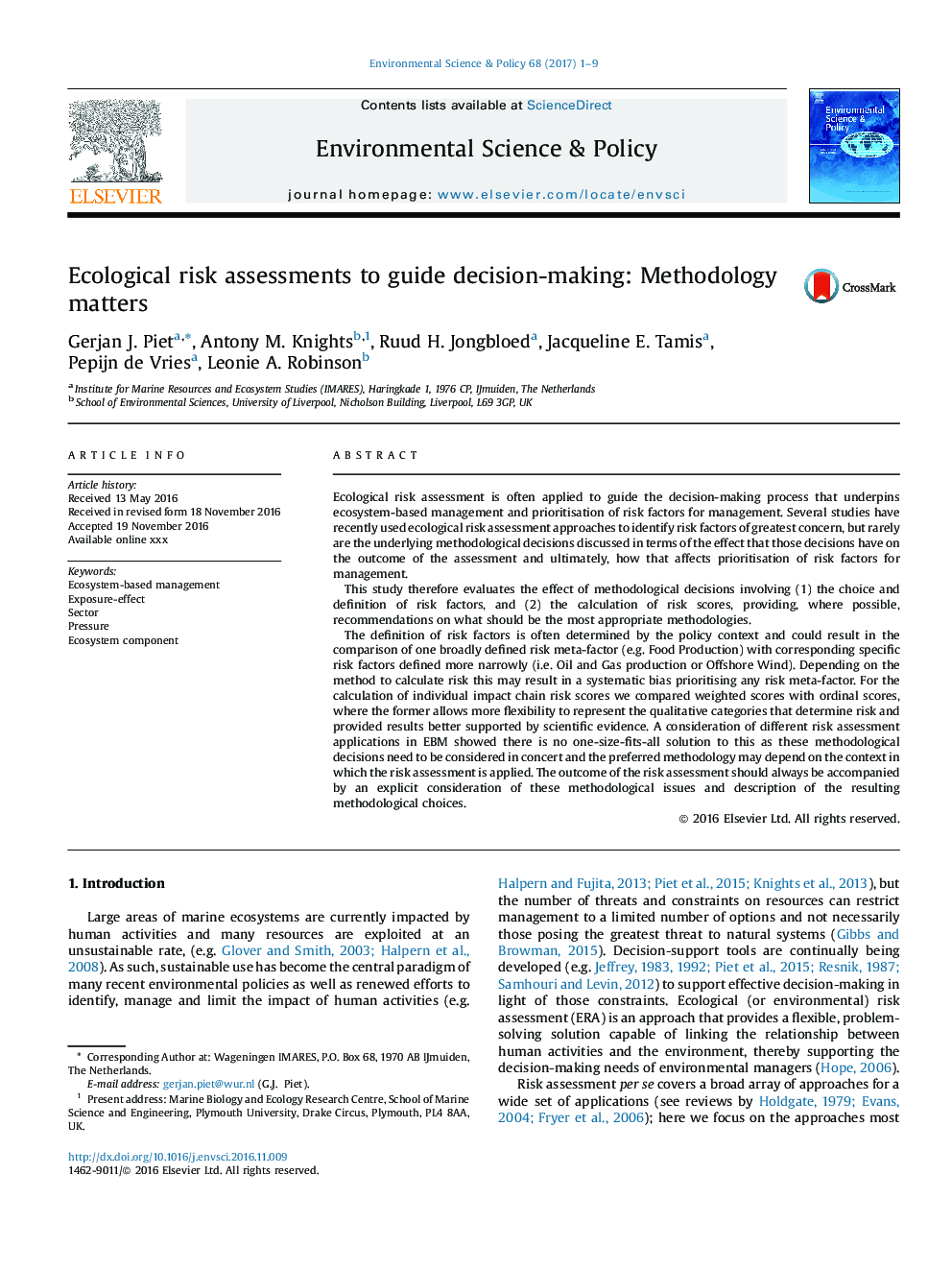| Article ID | Journal | Published Year | Pages | File Type |
|---|---|---|---|---|
| 5115830 | Environmental Science & Policy | 2017 | 9 Pages |
Abstract
The definition of risk factors is often determined by the policy context and could result in the comparison of one broadly defined risk meta-factor (e.g. Food Production) with corresponding specific risk factors defined more narrowly (i.e. Oil and Gas production or Offshore Wind). Depending on the method to calculate risk this may result in a systematic bias prioritising any risk meta-factor. For the calculation of individual impact chain risk scores we compared weighted scores with ordinal scores, where the former allows more flexibility to represent the qualitative categories that determine risk and provided results better supported by scientific evidence. A consideration of different risk assessment applications in EBM showed there is no one-size-fits-all solution to this as these methodological decisions need to be considered in concert and the preferred methodology may depend on the context in which the risk assessment is applied. The outcome of the risk assessment should always be accompanied by an explicit consideration of these methodological issues and description of the resulting methodological choices.
Related Topics
Physical Sciences and Engineering
Energy
Renewable Energy, Sustainability and the Environment
Authors
Gerjan J. Piet, Antony M. Knights, Ruud H. Jongbloed, Jacqueline E. Tamis, Pepijn de Vries, Leonie A. Robinson,
